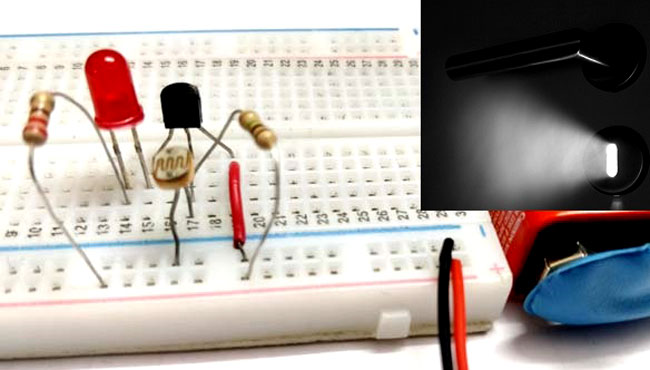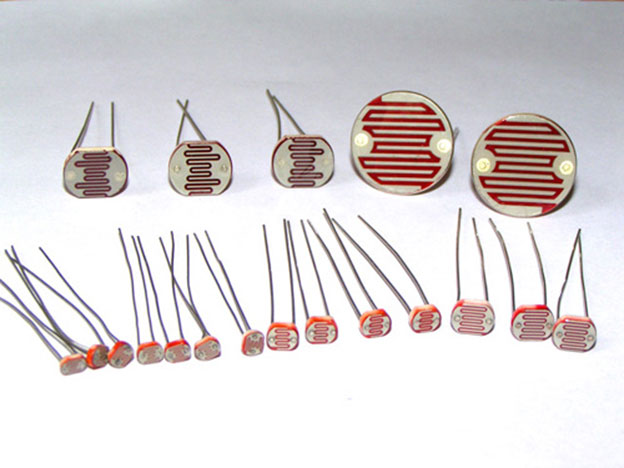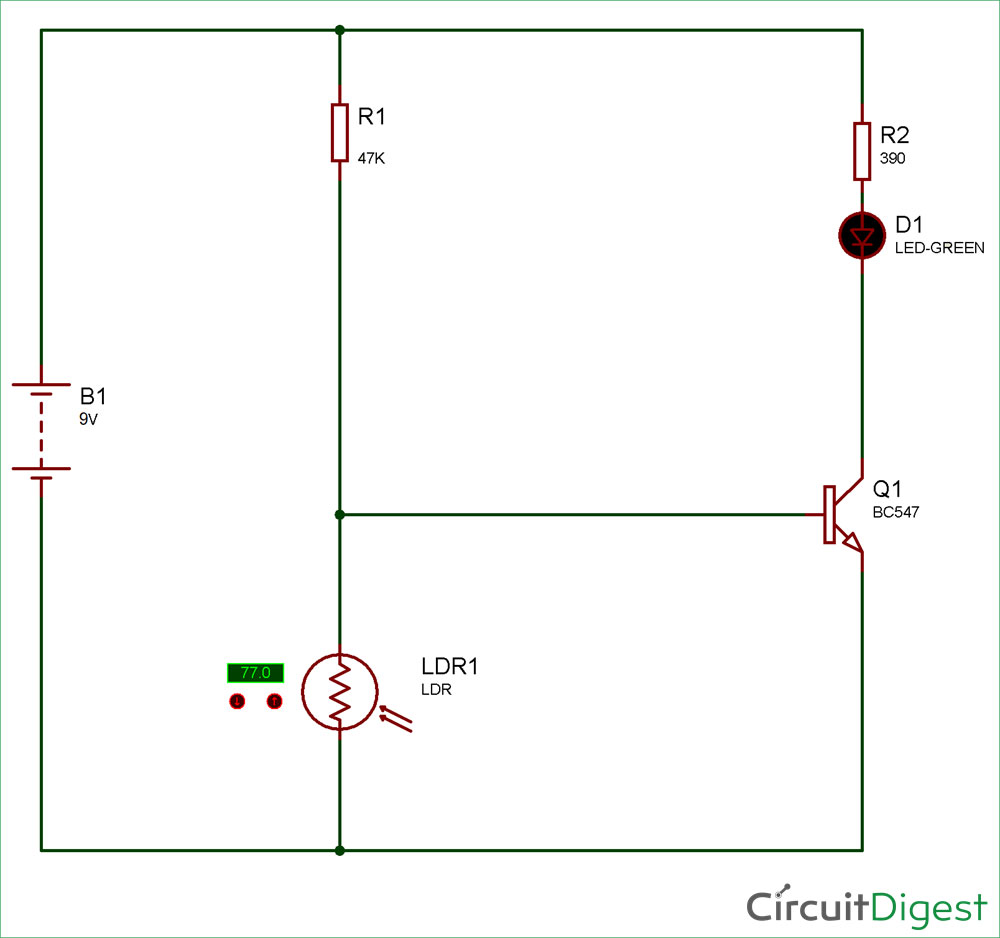
Sometimes when we reach home in the night it’s hard to unlock the door lock, as we are not able to find the keyhole because of darkness. So, to get rid of this problem there are many keyhole lighting devices are available in the market. But we can also make one easily, using LDR. Here, we are going to control the key-hole light automatically based on the darkness outside, the key-hole light turns ON automatically when it is dark outside and turns off when it gets bright. It will not just turn off or on but its brightness will be adjusted according to light conditions outside.
For this Keyhole Light Circuit, we need a light sensor to detect the light condition and some circuitry to control the Light sensor. We are using a LDR (Light Dependent Resistor) to get control according to the intensity of light and transistor for switching.
Components Required:
- Resistors 47K, 390ohm
- Breadboard
- LED
- Battery 5V
- LDR
- BC547 Transistor
- Connecting wire
Before going into detail we will first learn about LDR and NPN transistor BC547.
LDR (Light Dependent Resistor):
LDR is Light Dependent Resistor. LDRs are made from semiconductor materials to enable them to have their light-sensitive properties. There are many types but one material is popular and it is cadmium sulfide (CdS). These LDRs or PHOTO RESISTORS works on the principle of “Photo Conductivity”. Now what this principle says is, whenever light falls on the surface of the LDR (in this case) the conductance of the element increases or in other words, the resistance of the LDR falls when the light falls on the surface of the LDR. This property of the decrease in resistance for the LDR is achieved because it is a property of semiconductor material used on the surface. We have explained the need of LDR in our circuit in the ‘working of the project’ given later in the project.

We previously made many Circuits using LDR, which use LDR to automate the lights according to requirement. The most common circuit using LDR is Darkness Detector.
NPN Transistor (BC547)
Here we are using NPN Transistor BC547 as a Switch. When there is no voltage applied to the base of the NPN Transistor, it remains in OFF state and no current will flow between collector and emitter, so it will act as open switch. Now when a small voltage (typically 0.7 volt) is applied to the base of NPN transistor then it starts conducting and current from collector to emitter will start flowing, in this case it will act as closed switch. Learn more about NPN Transistors here.
BC547 allows 100mA of maximum current flow through the collector pin and input current limit is 5mA to the base pin for biasing. As the base pin kept ground the transistor moves to reverse biased condition and do not conduct current through it (which is the Cut-Off point), as supply provide to base pin it start conducting through the emitter to collector (which is the Saturating point). The normal voltage range through the collector-emitter and base-emitter is 200 and 900mV respectively.
|
Pin No. |
Pin Name |
Description |
|
1 |
Collector |
Current flows in through collector |
|
2 |
Base |
Controls the biasing of transistor |
|
3 |
Emitter |
Current Drains out through emitter |

NPN transistor can also be used as amplifier having a gain value of 110 to 800. Check all the NPN transistor circuits here.
CIRCUIT DIAGRAM:
WORKING of Key-Hole Light Circuit:

After connecting the circuit as per the circuit diagram, you can fix the circuit in the key-hole in any lock. If it is dark over the LDR, the resistance of LDR increases and if it is bright LDR’s resistance decreases. In the circuit, we are making a voltage divider circuit using the 1 mega-ohm resistance and LDR and supplying its output to the base terminal of the BC547 NPN transistor.
When LDR resistance increases (which means dark), the base terminal of BC547 gets HIGH which allow the current to flow through the collector to the emitter and therefore, LED turns ON. If LDR resistance decreases (which means bright), the base terminal gets LOW and the LED turns OFF.
Hence, if we come home in night, we will find key-hole light turned ON automatically because of darkness outside and we can easily find the key-hole and unlock the door. Check the demonstration video given below.






